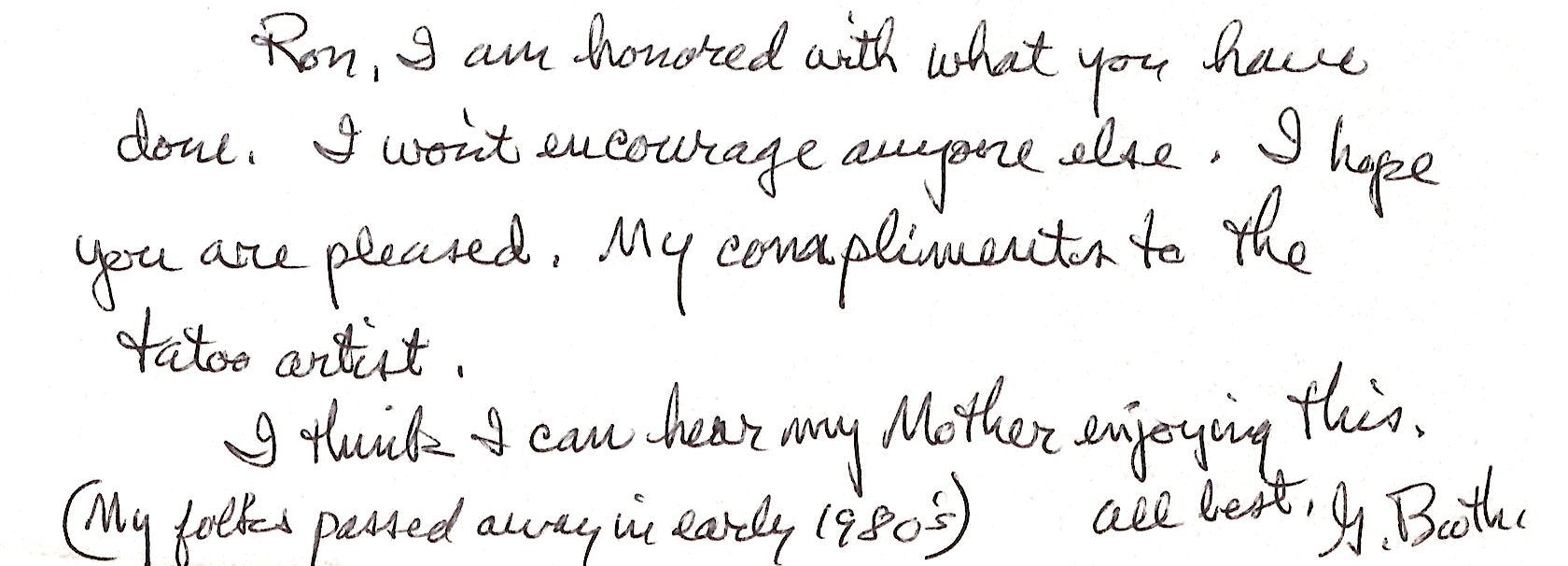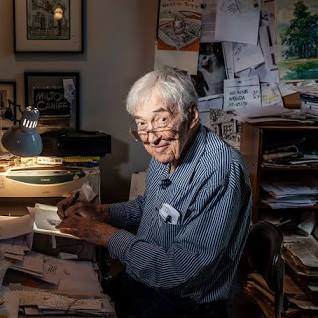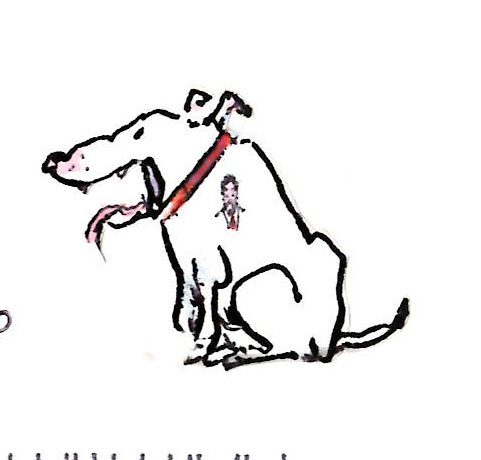BOOTH, GEORGE (1926-2022)
Price: $195.00
Description:From The New Yorker, November 2022. George Booth, the New Yorker cartoonist who created a world of oddballs sharing life’s chaos with a pointy-eared bull terrier that once barked a flower to death, and sometimes with a herd of cats that shredded couches and window shades between sweet naps, died on Tuesday at his home in Brooklyn. He was 96. It was this dealers privilege to correspond with Mr. Booth several times. To my knowledge, I am the only person who were ever granted permission by Mr. Booth to have a tattoo placed on my body (much to his chagrin).
ALS – Autograph Letter Signed, one page, 1997. (In the 1980’s I was accorded the nickname maddog by physician-colleage Dr. Brenda McDuffie — those were wild days. I wanted a maddog tattoo but not just any ole ink design. I knew that Mr. Booth had drawn possessed, schizo cats and dogs for many years, one being his “Smarf” dog. I wrote to the artist explaining my idea. He literally discouraged me saying that many of his WWII buddies had tattoos that they later regretted. While he was flattered, he initially couldn’t approve of the idea of his art on someone’s body. Determined to move forward I had the tattoo done on my left shoulder. I sent a copy of the tattoo to Mr. Booth. Replied the caricaturist: Thank you for the photos. It looks good to me. If anyone came at me with a tattoo needle I would run, retreat or cower. A school teacher knocked on my door 20 years ago – a man. His little dog had died. She was black with longist hair. He had pictures. He asked if my dog had a name. I replied No. He offered his dog’s name and I accepted it: ‘Smarfie Sue’ Smarf when he’s a he. I am honored with what you have done. I won’t encourage anyone else. I hope you are pleased. My compliments to the tattoo artist. I think I can hear my mother enjoying this (my folks passed away in the early 1980s). All best, G. Booth.
A collector once asked how it is that I can part with precious items – especially if they were addressed to me. I view my role as that of temporary custodian. As a former entertainment writer and publicist, I have many cherished memories. They will likely serve me longer than an autograph letter.





